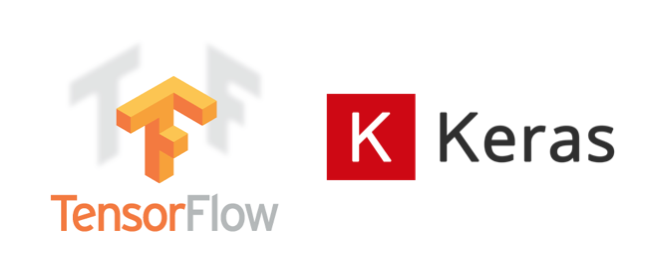Building Regression Model using Keras: Part 2
In part 2, the network properties will again be increased to achieve a higher model accuracy. Later, the model will be saved, load and predict new concrete strength with new user-defined parameters.
Credit: IBM Cognitive Class
Building a Concrete Compressive Strength Model using Keras Framework

import pandas as pd
import numpy as np
url = 'https://s3-api.us-geo.objectstorage.softlayer.net/cf-courses-data/CognitiveClass/DL0101EN/labs/data/concrete_data.csv'
df = pd.read_csv(url)
df.head()
| Cement | Blast Furnace Slag | Fly Ash | Water | Superplasticizer | Coarse Aggregate | Fine Aggregate | Age | Strength | |
|---|---|---|---|---|---|---|---|---|---|
| 0 | 540.0 | 0.0 | 0.0 | 162.0 | 2.5 | 1040.0 | 676.0 | 28 | 79.99 |
| 1 | 540.0 | 0.0 | 0.0 | 162.0 | 2.5 | 1055.0 | 676.0 | 28 | 61.89 |
| 2 | 332.5 | 142.5 | 0.0 | 228.0 | 0.0 | 932.0 | 594.0 | 270 | 40.27 |
| 3 | 332.5 | 142.5 | 0.0 | 228.0 | 0.0 | 932.0 | 594.0 | 365 | 41.05 |
| 4 | 198.6 | 132.4 | 0.0 | 192.0 | 0.0 | 978.4 | 825.5 | 360 | 44.30 |
MODEL - Construct Model to Predict and Forecast.
Split Data to Predictors and Target
X = df.iloc[:,:-1]
X.head()
| Cement | Blast Furnace Slag | Fly Ash | Water | Superplasticizer | Coarse Aggregate | Fine Aggregate | Age | |
|---|---|---|---|---|---|---|---|---|
| 0 | 540.0 | 0.0 | 0.0 | 162.0 | 2.5 | 1040.0 | 676.0 | 28 |
| 1 | 540.0 | 0.0 | 0.0 | 162.0 | 2.5 | 1055.0 | 676.0 | 28 |
| 2 | 332.5 | 142.5 | 0.0 | 228.0 | 0.0 | 932.0 | 594.0 | 270 |
| 3 | 332.5 | 142.5 | 0.0 | 228.0 | 0.0 | 932.0 | 594.0 | 365 |
| 4 | 198.6 | 132.4 | 0.0 | 192.0 | 0.0 | 978.4 | 825.5 | 360 |
y = df.iloc[:,-1]
y.head()
0 79.99
1 61.89
2 40.27
3 41.05
4 44.30
Name: Strength, dtype: float64
Normalizing Data
X_norm = (X - X.mean()) / X.std()
X_norm.head()
| Cement | Blast Furnace Slag | Fly Ash | Water | Superplasticizer | Coarse Aggregate | Fine Aggregate | Age | |
|---|---|---|---|---|---|---|---|---|
| 0 | 2.476712 | -0.856472 | -0.846733 | -0.916319 | -0.620147 | 0.862735 | -1.217079 | -0.279597 |
| 1 | 2.476712 | -0.856472 | -0.846733 | -0.916319 | -0.620147 | 1.055651 | -1.217079 | -0.279597 |
| 2 | 0.491187 | 0.795140 | -0.846733 | 2.174405 | -1.038638 | -0.526262 | -2.239829 | 3.551340 |
| 3 | 0.491187 | 0.795140 | -0.846733 | 2.174405 | -1.038638 | -0.526262 | -2.239829 | 5.055221 |
| 4 | -0.790075 | 0.678079 | -0.846733 | 0.488555 | -1.038638 | 0.070492 | 0.647569 | 4.976069 |
Save number of feature columns, n_cols to use later in model development.
n_cols = X.shape[1]
n_cols
8
Importing Libraries
from sklearn.model_selection import train_test_split
from sklearn.metrics import mean_squared_error
from sklearn.metrics import r2_score
import keras
from keras.models import Sequential
from keras.layers import Dense
Using TensorFlow backend.
Building the Model
Network Properties:
- Hidden Layers: 7
- Nodes: 25
- Activation Function: ReLU
- Optimizer: Adam
- Loss Function: Mean Squared Error
- Epochs: 250
mse = []
r2 = []
for i in range(50):
#Split Data to Train and Test Set
X_train, X_test, y_train, y_test = train_test_split(X_norm, y, test_size = 0.3)
#Create model
model = Sequential()
model.add(Dense(25, activation='relu', input_shape=(n_cols,)))
model.add(Dense(25, activation='relu'))
model.add(Dense(25, activation='relu'))
model.add(Dense(25, activation='relu'))
model.add(Dense(25, activation='relu'))
model.add(Dense(25, activation='relu'))
model.add(Dense(25, activation='relu'))
model.add(Dense(1))
#Compile model
model.compile(optimizer='adam', loss='mean_squared_error')
#fit the model
model.fit(X_train, y_train, epochs=250, verbose=0)
#predict output on test set
y_pred = model.predict(X_test)
mse.append(mean_squared_error(y_test, y_pred))
r2.append(r2_score(y_test, y_pred))
print('mse_Mean: {:.2f}'.format(np.mean(mse)))
print('mse_StdDev: {:.2f}'.format(np.std(mse)))
mse_Mean: 31.73
mse_StdDev: 5.62
print('R^2_Mean: {:.2f}'.format(np.mean(r2)))
print('R^2_StdDev: {:.2f}'.format(np.std(r2)))
R^2_Mean: 0.89
R^2_StdDev: 0.02
from IPython.display import HTML, display
import tabulate
tabletest = [['MSE: Mean','MSE: StdDev','R^2: Mean','R^2: StdDev'],
[round(np.mean(mse),2), round(np.std(mse),2), round(np.mean(r2),2), round(np.std(r2),2)]]
display(HTML(tabulate.tabulate(tabletest, tablefmt='html')))
| MSE: Mean | MSE: StdDev | R^2: Mean | R^2: StdDev |
| 31.73 | 5.62 | 0.89 | 0.02 |
Comparing the results from Part 1:
- mean squared error has gone down from 112.99 to 31.73
- R^2 has gone up from 0.59 to 0.89
which means the overall accuracy has gone up compared from the previous run.
SAVING MODEL
model.save('keras_reg.h5')
Predict New Concrete Strength Value with Pretrained Model
Import Module
import numpy as np
from keras.models import load_model
Load Pretrained Model
keras_reg = load_model('keras_reg.h5')
Insert New Parameters
#Cement
x1 = 1540.0
#Blast Furnace Slag
x2 = 250.0
#Fly Ash
x3 = 0.0
#Water
x4 = 162.0
#Superplasticizer
x5 = 2.5
#Coarse Aggregate
x6 = 1055.0
#Fine Aggregate
x7 = 676.0
#Age
x8 = 450
X = np.array([[x1, x2, x3, x4, x5, x6, x7, x8]])
X_norm = (X - X.mean()) / X.std()
strength_pred = keras_reg.predict(X_norm)
New Prediction
print('The predicted concrete strength is {:.2f}'.format(strength_pred[0][0]))
The predicted concrete strength is 56.26

